U-M ramped up energy conservation projects thanks to a $25 million investment from the revolving energy fund. Project types include LED lighting upgrades and more complex energy conservation projects like HVAC and building envelope upgrades.
LEDs can use 50% less energy than traditional fluorescent bulbs. Reducing energy consumption lowers the amount of energy the university needs to generate and procure, thus reducing operating costs and carbon emissions as we work to achieve carbon neutrality.
The Office of Campus Sustainability is supporting the work on the Ann Arbor campus, including the development of project proposals, financial management, data tracking, and project close-out. The projects themselves are managed in a variety of ways, including by AEC Construction Services, AEC Construction Management, and units that have contracted with external vendors.
The Planet Blue website provides high-level info about Flint and Dearborn projects.
Project timing and other details are evolving. We’ll update this page regularly.
Ann Arbor Campus Projects
LED Lighting Upgrades
Completed Projects
Angell and Tisch Halls
Couzens Hall
Chrysler Center
Dow Building
Duderstadt Center
East Quad
Francois-Xavier Bagnoud Building
Gerstacker Building
GG Brown Building
Housing Parking Lots
Literature, Science and Arts Building
Lorch Hall
Mason Hall
Michigan Memorial Phoenix Project Lab
Modern Languages Building
Munger Graduate Residences
North Campus Research Complex (NCRC) Buildings 10, 14, 16, 18, 22, 28
Nuclear Engineering Laboratories
Tappan Hall
In Progress
Baits II
Bob and Betty Beyster Building
Brehm Tower
Buhl Building
Climate and Space Research
Cook Legal
East Hall
Electrical Engineering and Computer Science
Engineering Research Building II
Environmental and Water Resources Engineering
Hatcher Library
Hutchins Hall
Institute for Social Research
Mary Sue Coleman Hall
North Campus Research Complex (NCRC) Buildings 20, 26, 75
North Quad
Perry Building
Randall Lab
Roger Cancer Center
School of Public Health I and II
Shapiro Library
Thayer Building
Undergraduate Science Building
University Hospital South Units 1, 2, 4
West Hall
Non-Lighting Projects
In Progress
1100 North University Building
Bursley Hall Kitchen DX Compressor
Brehm Tower CHW Optimization
East Quad Kitchen Exhaust DCV
University Hospital South Unit 3 AHU-1 Renovation
LED Upgrade Frequently Asked Questions
How does installing LEDs contribute to the university’s carbon neutrality goals?
Which campuses and units are included?
The initial round includes 50 projects on the Ann Arbor campus (across general fund, NCRC, and Student Life buildings) and on the Flint and Dearborn campuses.
How are the projects funded?
The projects are funded by the university’s revolving energy fund.
How were projects selected?
Equity and project availability were the primary criteria. Development of a lighting upgrade project requires time and effort to audit older buildings (for which construction drawings may not exist or be accurate) to determine existing fixture types, lamp counts, costs, carbon emissions, and payback periods. Existing project proposals were included in this launch. Staff and students are currently working to develop new project proposals in many remaining buildings.
Who is performing installations?
Internal and external construction crews.
How long will each installation take? Will it be noisy or disruptive?
The duration depends on the size of the building and the scope of work, ranging from weeks to months. Installers make an effort to cause as little disruption as possible, including – if feasible – doing the installation when a space is vacant. In addition, the periodic disruption of replacing burned-out bulbs will greatly diminish: LEDs have 60,000-hour expected life, which in a typical office could be 30 years!
How is scheduling of buildings and rooms being managed?
At the building level, coordinators determine when it’s easiest to work in each building and aim to schedule the installations during that time. For instance, classroom buildings are notably emptier during the summer. Some buildings are busy all year long, so there’s not always a perfect solution. At the room level, the facility manager guides day-to-day sequencing based on room usage.
When each project is done, will the building be lit entirely by LEDs?
This first wave of LED lighting projects is focused on linear fluorescent tubes. These are the most common lamps on campus, the most popular choice for lighting fixtures from the mid-1980s to mid-2010s. Linear lamp replacements are proving to be the best investment today. In coming years, we will return to the buildings and replace the remaining lamps with LEDs.
Will the look and feel of the light produced by LEDs differ from existing fluorescent lights?
The color temperature of the LED lamps matches the existing fluorescent bulbs to produce a barely noticeable difference.
What will happen to the equipment that is removed?
The old lamps and ballasts will be recycled.


